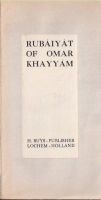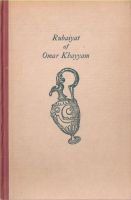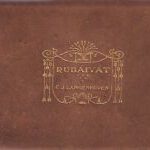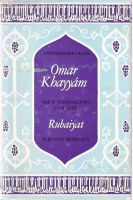Rubáiyát of Omar Khayyám. – Lochem : Buys, [ca. 1938]. – 32 p., 18 cm.
‘Tekst’ (p. 5-30); ‘Note’ (p. 31)
“This edition of the Rubáiyát of Omar Khayyám is reprinted from Edward FitzGerald’s translation published in 1859; published by H. Buys, Lochem, Holland and printed by the N.V. Lochemse Handels- en Courantendrukkerij from the Century type, numbered 1-1800, six copies beyond commerce.”
Niet alle exemplaren zijn genummerd.







